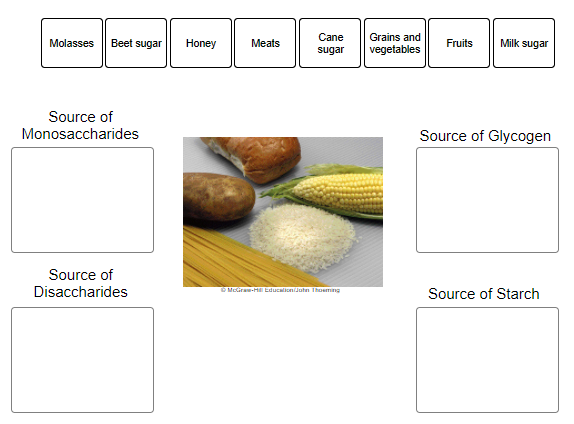
For the different types of carbohydrates, drop the label into the appropriate box, indicating whether each is a source of monosaccharides, disaccharides, or polysaccharides.
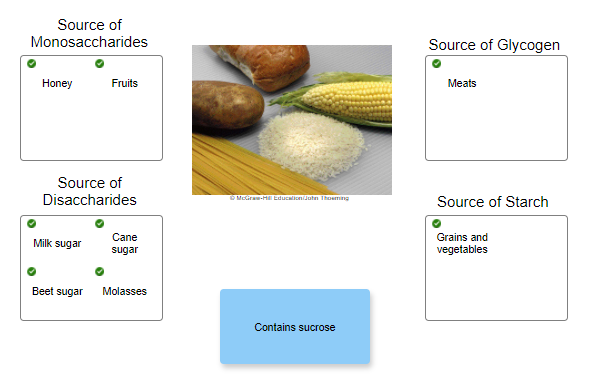
Match the food sources with the predominant type of fat found in the food. (unsaturated fat or saturated fat)
1. Fats in seeds, nuts, and plant oils.
2. Fats in meats, eggs, milk, and lard.
1. Unsaturated fat
2. Saturated fate
Cholesterol, a type of lipid, is abundant in plant-based foods.
false
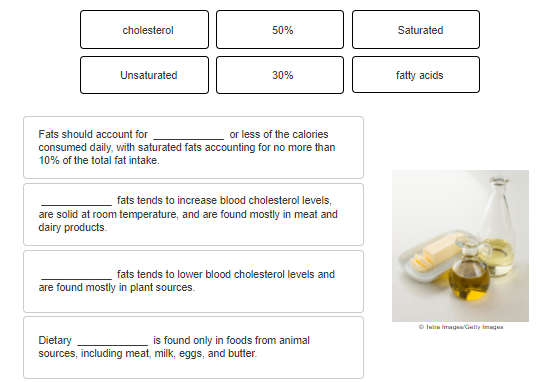
Complete the sentences describing fats in the diet.
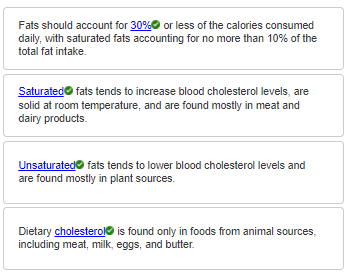
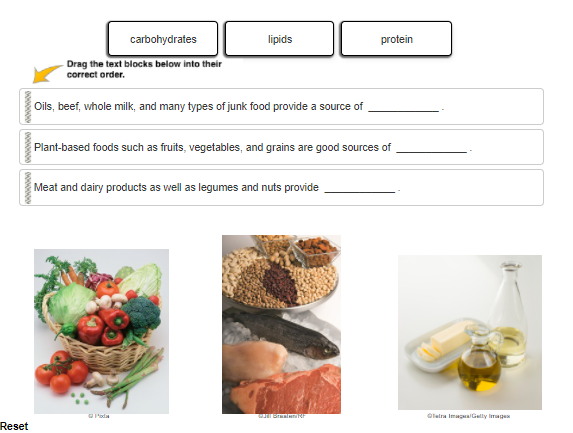
Complete the sentences describing the food sources for the various nutrients. Then place the sentences in order reflecting the percent of daily intake needed from each source (from greatest to least).

After absorption from the digestive tract, all monosaccharides are converted by liver enzymes to what compound?
Glucose
What types of fats are associated with increased risk of cardiovascular disease?
Saturated fats
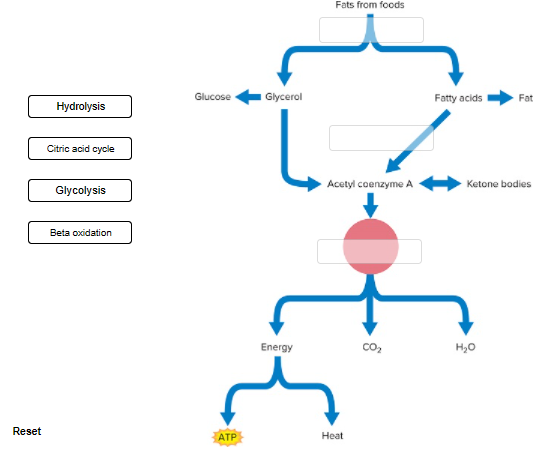
The figure illustrates the oxidation of dietary fats, producing glucose, fats, ketone bodies, or ATP. Correctly label the metabolic processes occurring at each step
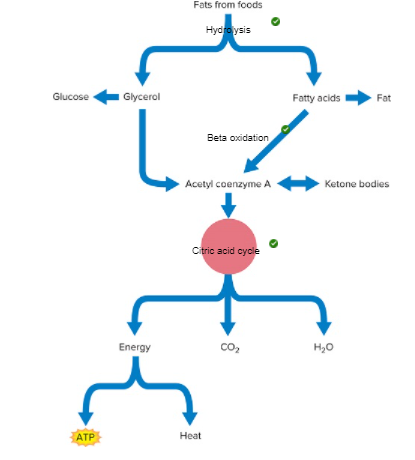
Name the body's main use for triglycerides.
As an energy source
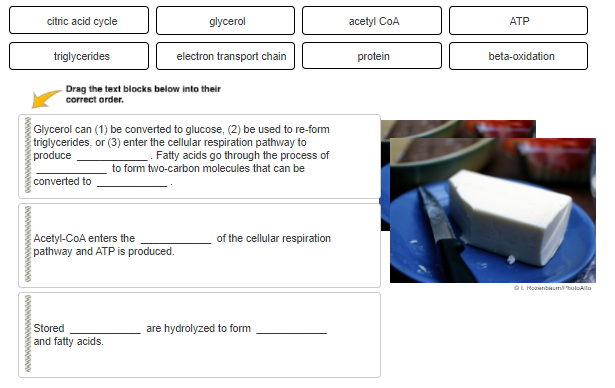
Complete the sentences, then put the steps of lipid metabolism in order.
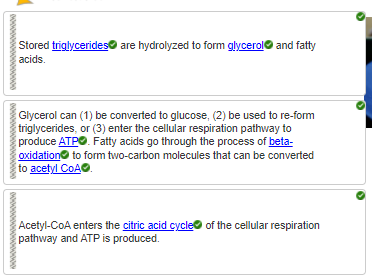

Match each description with the correct type of lipoprotein.
High concentration of protein; low concentration of lipid- High-density lipoproteins (HDLs)
High concentration of cholesterol- Low-density lipoproteins (LDLs)
High concentration of triglycerides- Very-low-density lipoproteins (VLDLs)
Indicate the functions of cholesterol
-Precursor for some hormones
-Precursor for bile
salts
-Structural component of cell membranes
Name the process that an amino acid must undergo in order for it to be used for fuel or to produce glucose.
Deanimation
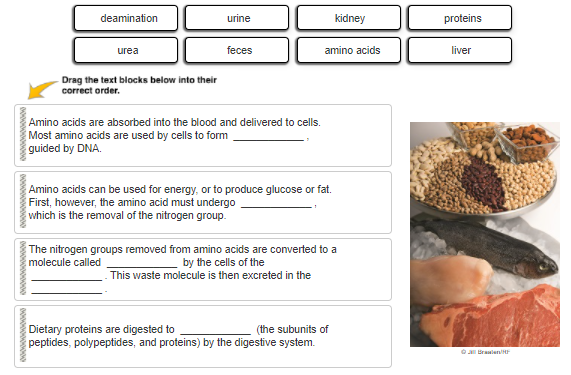
Complete the sentences and place them in order to describe the process of protein metabolism.
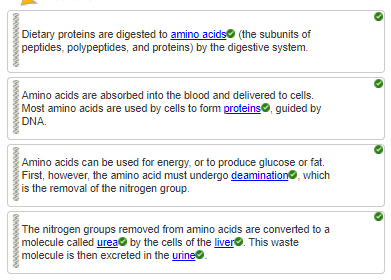
What is a complete protein?
A dietary protein that provides adequate amounts of all essential amino acids to maintain life and support growth
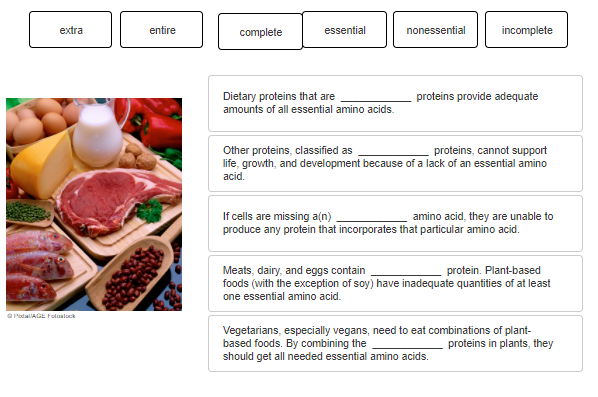
Complete the sentences describing complete and incomplete proteins. Labels can be used more than once.
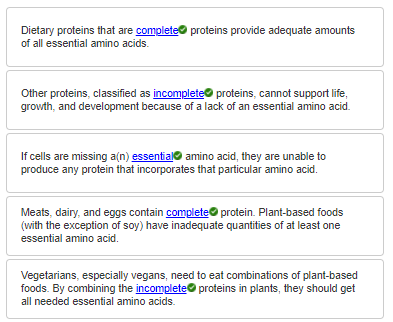
Of the six classes of nutrients, name the type of nutrient that provides nitrogen for the body.
Protein
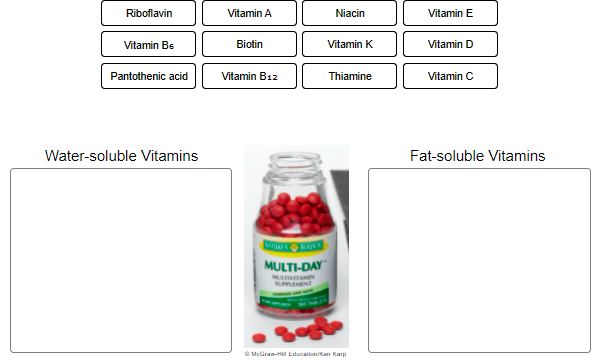
Classify each vitamin as a fat-soluble vitamin or a water-soluble vitamin.
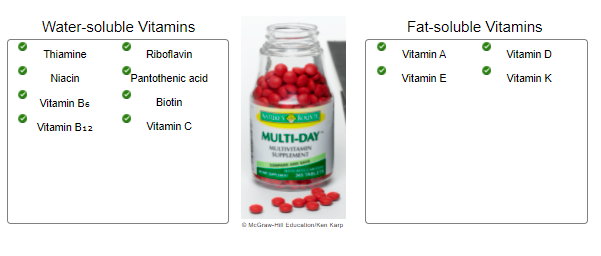
The B vitamins and vitamin C are fat-soluble vitamins.
False
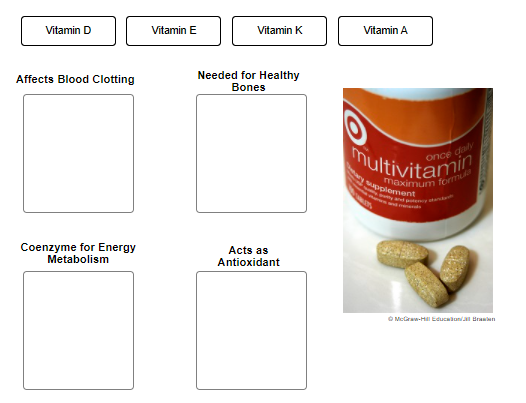
Drop each vitamin into the box describing its major function(s). Boxes may end up with one item, more than one item, or none.
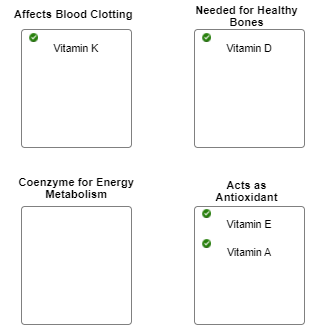
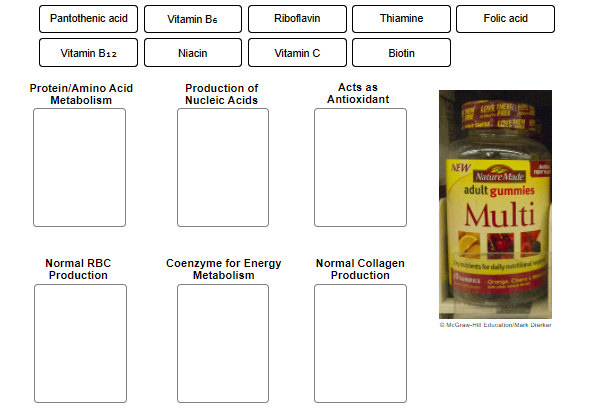
Drop each vitamin into the box describing its major function(s). Labels can be used more than once. Boxes may end up with one item, more than one item, or none.
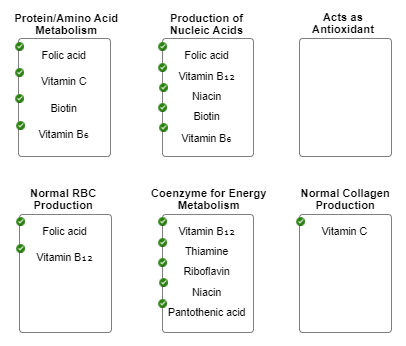
Which class of vitamin is more likely to be stored in the tissues of the body?
Fat-soluble vitamins
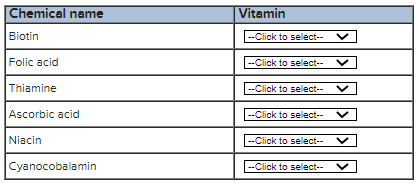
Vitamins also have chemical names. Match each chemical name with the correct vitamin.
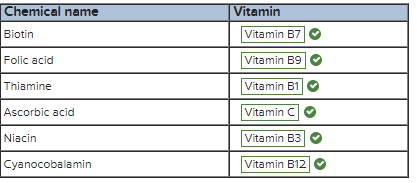
Beta-carotene is a precursor for vitamin __________.
A
Indicate the vitamins that function as antioxidants. Check all that apply.
Vitamin A and E
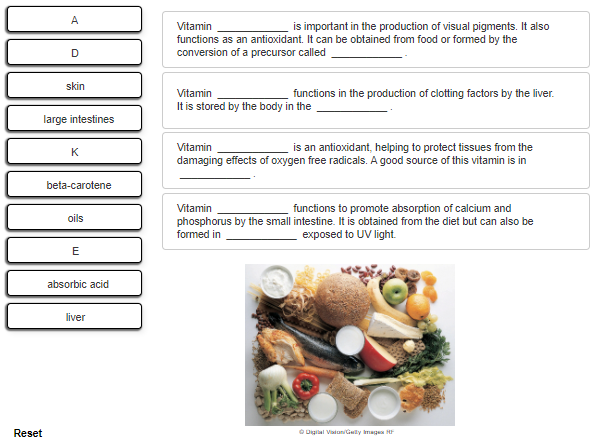
Complete the sentences describing the functions of the fat-soluble vitamins.
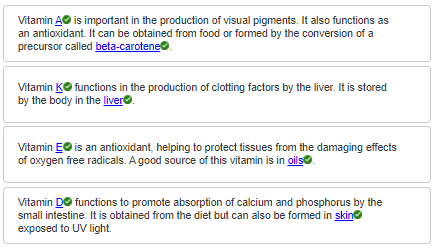
Within the skin, ultraviolet (UV) light striking a provitamin derived from cholesterol results in conversion of the provitamin to vitamin __________.
D
Name the B vitamins.
Folic Acid
Pantothenic acid
Biotin
Vitamin B6, B12
Niacin
Thiamine
Riboflavin
Name the B vitamin that can be made from the amino acid tryptophan
Niacin
The absorption of vitamin __________ from the small intestine requires intrinsic factor, produced by stomach cells.
B12
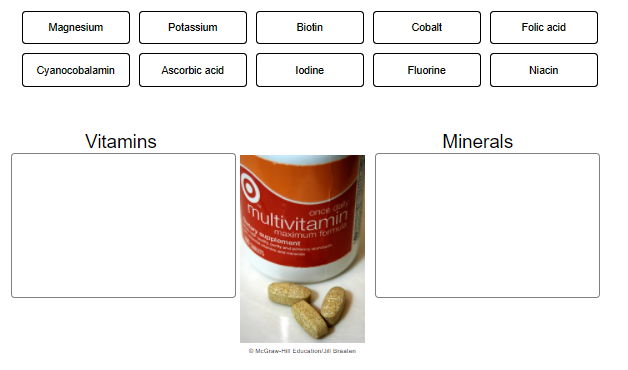
Drop each label into the appropriate box, indicating if it is a vitamin or a mineral.
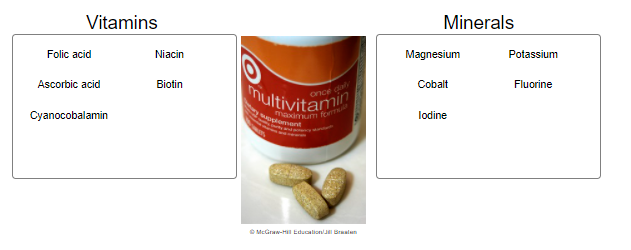

Match the definition to the correct class of nutrients.
Minerals- inorganic elements needed for metabolism
Vitamins- organic essential compounds needed in very small amounts; needed for normal metabolism
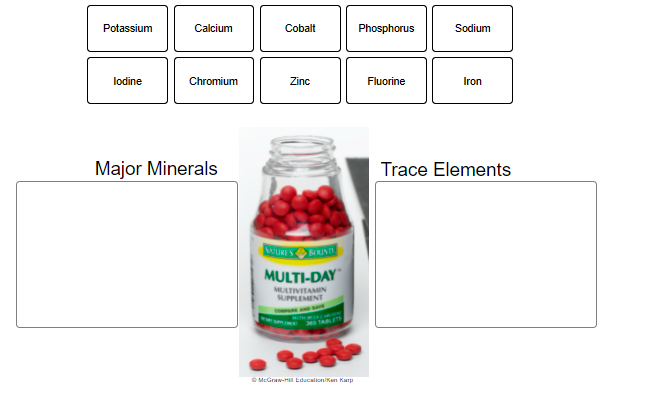
These labels list some of the minerals needed by the body. Classify each mineral as either a major mineral or a trace element.
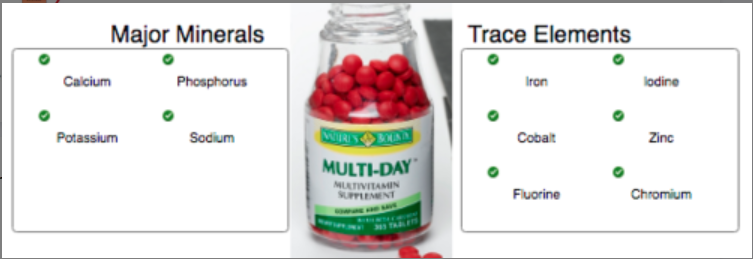
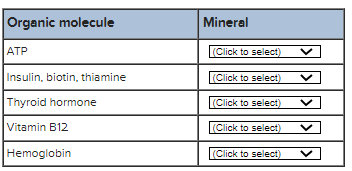
Match each organic molecule with the mineral that forms part of its structure.
Phosphorus- ATP
Sulfur- insulin, biotin, thiamine
Iodine- thyroid hormone
Cobalt- vitamin B12
Iron- hemoglobin
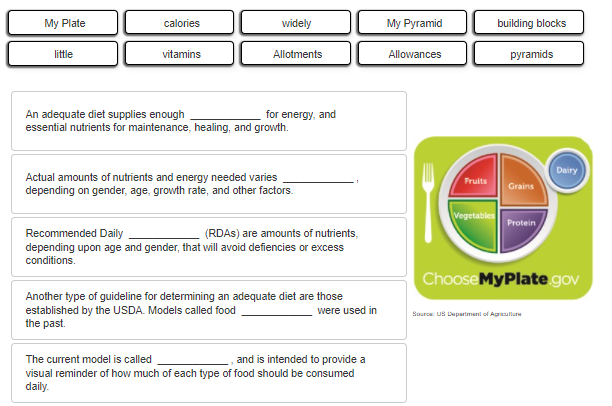
Complete the sentences describing an adequate diet.
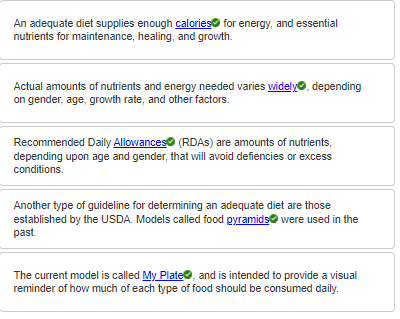
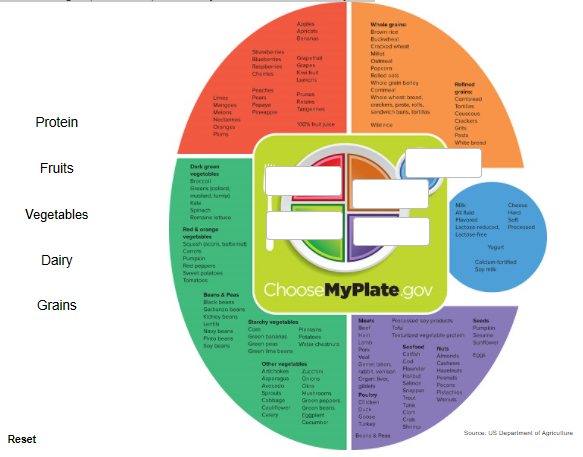
Label the food groups that comprise the My Plate model for a healthy diet.
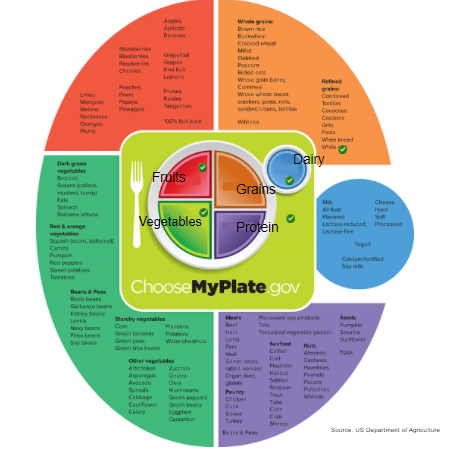
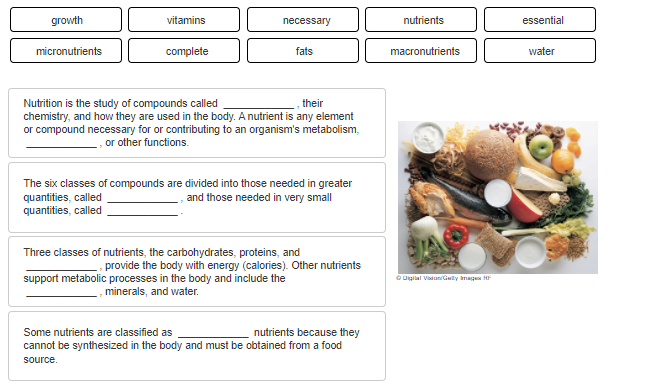
Complete the sentences defining nutrition and the classification of nutrients.
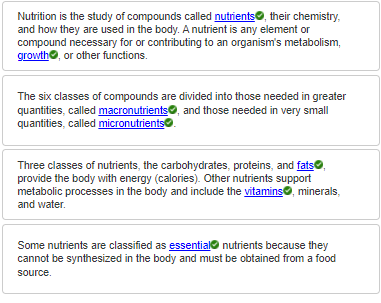
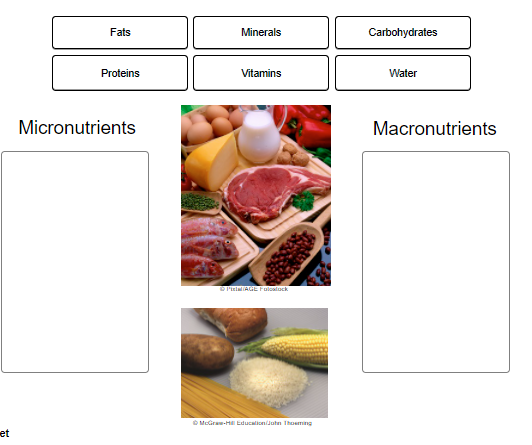
Classify each type of nutrient as a macronutrient or a micronutrient.
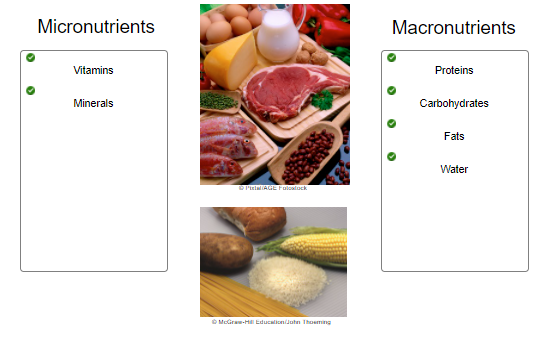
Why are some nutrients classified as essential nutrients?
The body cannot produce them in adequate amounts, so it is essential that they be in the diet.
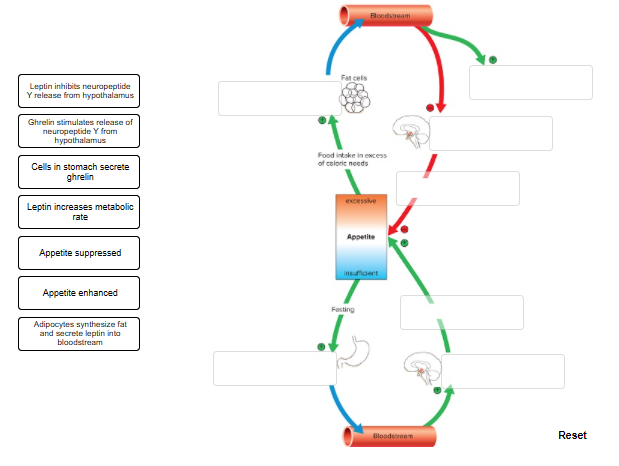
Control of appetite involves the hormones leptin and ghrelin. Complete the figure illustrating the control of appetite.
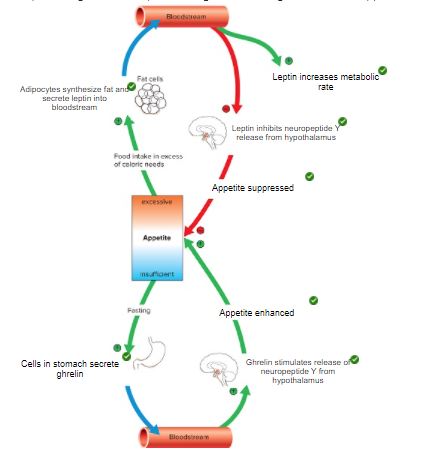
Neuropeptide Y __________ appetite.
Stimulates
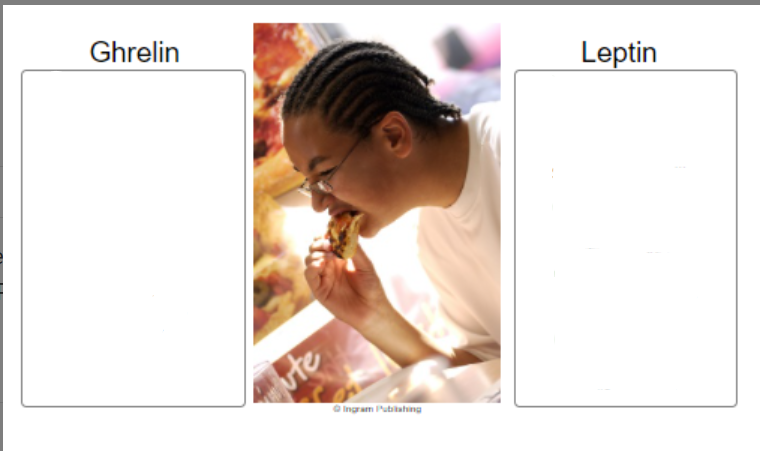
The labels describe characteristics of the hormones that regulate appetite. Place the labels in the appropriate box.
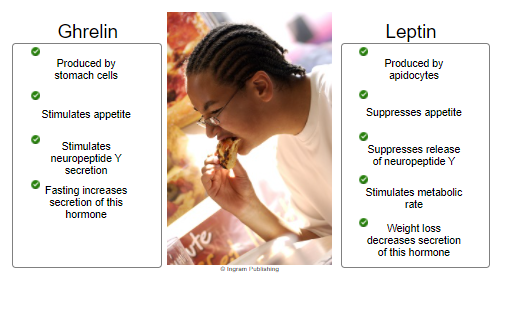
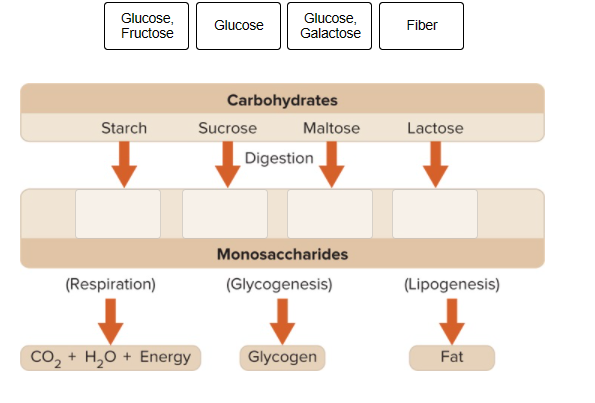
Fill in the blanks in the figure to indicate the possible metabolic uses of monosaccharides. Labels can be used more than once.
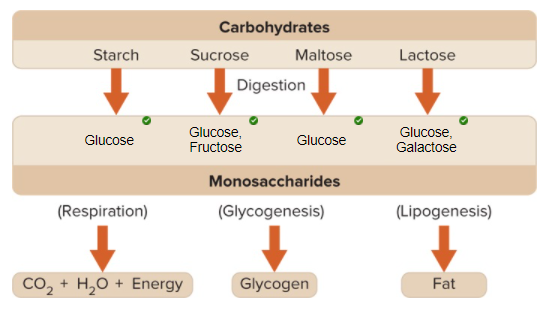
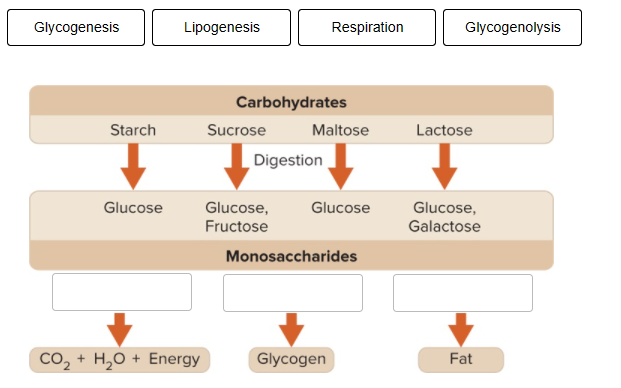
Fill in the blanks in the figure to indicate the possible metabolic uses of monosaccharides.
Fill in the blanks in the figure to indicate the possible products of the metabolism of monosaccharides.
Match the description of the metabolic reaction with its name.
Indicate which of the following are complex carbohydrates (polysaccharides).
-Glycogen
-Starch
-Cellulose
What occurs during the series of reactions called beta oxidation?
Removal of two-carbon segments from fatty acids
Isoleucine, leucine, and lysine are three examples of amino acids that the body can not make in sufficient quantity. How are these compounds classified?
Essential amino acids
Someone consuming more protein than they are losing via excretion are in _______ nitrogen balance.
Someone consuming less protein than they are losing via excretion are in ______ nitrogen balance.
Positive;
Negative
Complete the sentences regarding protein and its turnover.
Indicate the recommended daily intake of the three calorie-containing nutrients.
Complete the sentences describing how the energy values of foods are determined.
Indicate the number of calories contained in one gram of each of the following nutrients.
For each situation, indicate whether it is associated with an increased basal metabolic rate (BMR) or a decreased BMR by dropping it into the correct box.
For each kilogram of body weight, an individual requires __________ of energy to maintain their basal metabolic rate.
1 calorie per hour
1. A person in positive energy balance will ____ weight.
2. A person in energy balance will _____ weight.
3. A person in negative energy balance will ___ weight
1. gain
2. maintain
3. lose
Classify the BMI (body mass index) values as being healthy, overweight, or obese.
Indicate the correct values for each weight range.
Complete the sentences describing energy balance and weight
Healthy bones need an adequate supply of the minerals that form the inorganic structure of bone tissue. Having an adequate supply relies upon the functioning of a vitamin that helps in the absorption and retention of those minerals.
1. The inorganic portion of bone tissue consists of what two
minerals?
2. Vitamin __________ functions in the absorption of
minerals needed for bone formation.
3. In children, deficiency of
this vitamin results in deformity of bones. What is this condition called?
1. Calcium and phosphorus
2. D
3. Rickets
Production of normal red blood cells requires that normal DNA be formed and that hemoglobin be produced in adequate amounts. Several vitamins and minerals are needed for these processes to occur normally.
1. Several B vitamins, including __________ and __________ are necessary to produce DNA. Due to their rapid production, RBCs are affected if these vitamins are deficient; anemia can develop.
2. Production of hemoglobin requires what mineral?
3. Long-term deficiency of __________ and/or __________ leads to pernicious anemia, a condition in which nerve damage has already occurred at the time the anemia becomes symptomatic.
4. Deficiency of __________ leads to megaloblastic anemia, in which abnormal RBCs are very large (megalo-) and nucleated.
5. Deficiency of __________ leads to an anemia in which the RBCs are very pale, due to reduced quantity of hemoglobin.
1. Folic acid; vitamin B12
2. Iron
3. Vitamin B12;
cobalt
4. Folic acid
5. Iron
Several minerals serve as electrolytes in body fluids and cells. Their balance across neuron and muscle cell membranes influences membrane polarization, depolarization, and repolarization. Imbalances due to deficiencies of these electrolytes affect the functioning of nerves and muscles.
1. Cramps and convulsions result from hyperexcitability of
neural and muscular tissue. This can be caused by a deficiency in
what mineral?
2. Tetany (sustained contractions) can result from
deficiency of __________. This mineral also is needed for bone
formation.
3. Deficiency in __________ results in muscular
weakness due to hyperpolarization of the cell membranes.
1. Sodium
2. Calcium
3. Potassium
Several vitamins have roles in keeping epithelial and connective tissues healthy. Their deficiency results in symptoms involving these tissues. Complete the sentences describing these vitamins.
Match each vitamin with its associated deficiency symptoms.
Parathyroid hormone stimulates the production of the active form of vitamin __________, which then increases calcium absorption by the digestive system.
D
Several B vitamins act as coenzymes for the cellular respiration reactions. Indicate which B vitamin is involved at each labeled point in the pathway.
The vitamin __________ is a coenzyme for reactions involving nitrogen-containing compounds, including proteins and amino acids. Therefore, the dietary need for this vitamin depends on protein intake.
B6
Complete the sentences describing the function of some of the minerals.
Name the minerals that are important electrolytes for muscle and nerve function.
Sodium, potassium, and calcium
Place each description in the appropriate box, describing either marasmus or kwashiorkor, two types of malnutrition.
Indicate which situations lead to primary malnutrition
-Lack of available food
-Anorexia nervosa
- Excessive intake of high calorie food
Malnutrition
is defined as poor nutrition and includes both undernutrition and
overnutrition. Primary malnutrition is due to diet alone. Secondary
malnutrition occurs because of (secondary to) some other cause or condition.
The labels describe the eating disorders anorexia nervosa and bulemia.
With aging, the number of calories needed in the diet gradually increases.
False
Medical and socioeconomic conditions of many elderly leads to __________.
Undernutrition
Place each image into the correct box, indicating whether the individual is in a positive nitrogen balance or a negative nitrogen balance.
Carbohydrates, lipids, and proteins are __________ that provide energy and are required in large amounts. Vitamins and minerals are __________ that do not provide energy and are required in smaller amounts.
Macronutrients; micronutrients
Why is dietary fiber beneficial to the diet?
Fiber provides "bulk" in intestines, allowing better movement of intestinal contents.
Define the term gluconeogenesis.
Production of glucose from non-carbohydrates, like proteins and fats
Substances called __________ consist of a surface layer of phospholipid, cholesterol, and protein that surrounds a core consisting of triglycerides and other lipid-soluble compounds.
Lipoproteins
In comparing the classes of macronutrients, name the class that provides the most energy per gram.
lipids
What does body mass index (BMI) measure?
Weight relative to height
What structure regulates appetite?
Hypothalamus
What nutrient is absorbed along with other lipids, dissolves in lipids, and can lead to overdose with excess intake?
Fat-soluble vitamins
The fat-soluble vitamin __________ can be produced by intestinal bacteria.
K
Name the hormone that regulates sodium levels in the blood by altering kidney reabsorption of sodium.
Aldosterone
What is the product of the process of lipogenesis?
fats
What is the product of the process of glycogenesis?
Glycogen
The hormone called ______ suppresses appetite. It does so by inhibiting the release of ______, a neurotransmitter released from the hypothalamus. This compound ______ eating.
Leptin; neuropeptide Y; stimulates
Which hormone, if it were to be used clinically, could help in weight loss?
Leptin
Complete the sentences describing how different nutrients can be used to produce ATP.